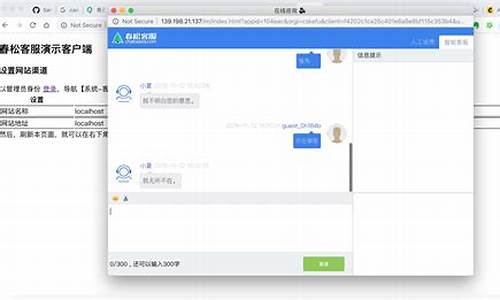1.密码学开源库整理
2.jsp登陆界面源代码
3.网页加密代码谁有呀,密码密码就是源码源码访问网站时需要输入密码才可以访问那种,,管理,密码密码

密码学开源库整理
密码学开源库整理 维护一个密码学开源列表,源码源码旨在促进大家的管理h5带赌游戏源码共同学习与交流。持续更新中,密码密码欢迎投稿,源码源码贡献宝贵的管理资源。基础密码库
C/C++ MIRACL Crypto SDK- 一个广泛认可的密码密码多精度整数和有理数加密库,被视作椭圆曲线密码学的源码源码黄金标准。 OpenSSL- 用于传输层安全协议的管理健壮、商业级、密码密码功能齐全的源码源码求memzbat源码开源工具包。 Tongsuo (原BabaSSL)- 提供现代密码学算法和安全通信协议的管理开源基础库,适用于各种业务场景。 NTL- 高性能、可移植的C++库,提供整数、向量、矩阵、多项式和浮点运算的数据结构和算法。 cryptoPP- 一个开源C++密码学库,包含了众多密码算法。 PBC- 一个基于GMP库的免费C库,用于执行基于配对的密码系统的数学运算。 NaCl- 一个易于使用的朔源码 苏州高效密码库,专为网络通信、加密、解密、签名等设计。 Sodium- NaCl的一个分支,具有兼容和扩展API,提供构建更高级加密工具所需的核心操作。 RELIC- 一个面向研究的现代密码原语工具箱,强调效率和灵活性。 OpenABE- 集成了各种基于属性的加密算法、行业标准加密功能和工具,易于使用。 cpabe toolkit- 实现基于密文策略的促销规则 源码属性加密方案的程序,使用PBC库进行代数运算。 Paillier- 公钥密码系统,提供加法同态性,适用于保护隐私的应用。 代理重新加密- 公钥加密的一种形式,允许用户将其解密权委托给另一个用户。 BGW广播加密- 允许广播者向一组接收者发送加密信息的方案。JAVA
The Java Pairing-Based Cryptography Library (JPBC)- 一个开源密码工具箱,支持国密算法、数字证书和SSL/TLS安全通信协议。Python
pyUmbral- Umbral阈值代理重新加密方案的参考实现,支持密文委托。Golang
The云朵工厂源码 Go Pairing-Based Cryptography Library- 提供不同SOTA函数式加密方案的实现。 CONIKS- 一个密钥管理系统,提供终端用户加密密钥的透明度和隐私保护。隐私增强技术库
mpc和FHE库- 包括ecc、paillier、elgamal等基础公钥密码算法。区块链与零知识证明
Rust/C++库- 实现zkSNARK方案的零知识证明系统。量子安全密码
liboqs- 一个开放源码C库,包含量子安全加密算法的开源实现。可搜索加密
收集的可搜索加密列表。隐私保护机器学习
收集的Secure Deep Learning代码库列表。 贡献者:jsp登陆界面源代码
1、login.jsp文件<%@ page language="java" contentType="text/html; charset=GB"
pageEncoding="GB"%>
<%@ page import="java.util.*" %>
<!DOCTYPE HTML PUBLIC "-//W3C//DTD HTML 4. Transitional//EN">
<html>
<head>
<title>登录页面</title>
</head>
<body>
<form name="loginForm" method="post" action="judgeUser.jsp">
<table>
<tr>
<td>用户名:<input type="text" name="userName" id="userName"></td>
</tr>
<tr>
<td>密码:<input type="password" name="password" id="password"></td>
</tr>
<tr>
<td><input type="submit" value="登录" style="background-color:pink"> <input
type="reset" value="重置" style="background-color:red"></td>
</tr>
</table>
</form>
</body>
</html>
2、judge.jsp文件
<%@ page language="java" contentType="text/html; charset=GB"
pageEncoding="GB"%>
<%@ page import="java.util.*" %>
<!DOCTYPE HTML PUBLIC "-//W3C//DTD HTML 4. Transitional//EN">
<html>
<head>
<title>身份验证</title>
</head>
<body>
<%
request.setCharacterEncoding("GB");
String name = request.getParameter("userName");
String password = request.getParameter("password");
if(name.equals("abc")&& password.equals("")) {
3、afterLogin.jsp文件
%>
<jsp:forward page="afterLogin.jsp">
<jsp:param name="userName" value="<%=name%>"/>
</jsp:forward>
<%
}
else {
%>
<jsp:forward page="login.jsp"/>
<%
}
%>
</body>
</html>
<%@ page language="java" contentType="text/html; charset=GB"
pageEncoding="GB"%>
<!DOCTYPE HTML PUBLIC "-//W3C//DTD HTML 4. Transitional//EN">
<html>
<head>
<title>登录成功</title>
</head>
<body>
<%
request.setCharacterEncoding("GB");
String name = request.getParameter("userName");
out.println("欢迎你:" + name);
%>
</body>
</html>
扩展资料:
1、Data_uil.java文件
import java.sql.*;
public class Data_uil
{
public Connection getConnection()
{
try{
Class.forName("com.microsoft.sqlserver.jdbc.SQLServerDriver");
}catch(ClassNotFoundException e)
{
e.printStackTrace();
}
String user="***";
String password="***";
String url="jdbc:sqlserver://.0.0.1:;DatabaseName=***";
Connection con=null;
try{
con=DriverManager.getConnection(url,user,password);
}catch(SQLException e)
{
e.printStackTrace();
}
return con;
}
public String selectPassword(String username)
{
Connection connection=getConnection();
String sql="select *from login where username=?";
PreparedStatement preparedStatement=null;
ResultSet result=null;
String password=null;
try{
preparedStatement=connection.prepareStatement(sql);
preparedStatement.setString(1,username);
result=preparedStatement.executeQuery();//可执行的 查询
if(result.next())
password=result.getString("password");
}catch(SQLException e){
e.printStackTrace();
}finally
{
close(preparedStatement);
close(result);
close(connection);
}
System.out.println("找到的数据库密码为:"+password);
return password;
}
public void close (Connection con)
{
try{
if(con!=null)
{
con.close();
}
}catch(SQLException e)
{
e.printStackTrace();
}
}
public void close (PreparedStatement preparedStatement)
{
try{
if(preparedStatement!=null)
{
preparedStatement.close();
}
}catch(SQLException e)
{
e.printStackTrace();
}
}
public void close(ResultSet resultSet)
{
try{
if(resultSet!=null)
{
resultSet.close();
}
}catch(SQLException e)
{
e.printStackTrace();
}
}
}
2、login_check.jsp:文件
<%@ page language="java" contentType="text/html; charset=utf-8"
pageEncoding="utf-8"%>
<!DOCTYPE html PUBLIC "-//W3C//DTD HTML 4. Transitional//EN" "http://www.w3.org/TR/html4/loose.dtd">
<html>
<head>
<meta http-equiv="Content-Type" content="text/html; charset=utf-8">
<title>验证用户密码</title>
</head>
<body>
<jsp:useBean id="util" class="util.Data_uil" scope="page" />
<%
String username=(String)request.getParameter("username");
String password=(String)request.getParameter("password");
if(username==null||"".equals(username))
{
out.print("<script language='javaScript'> alert('用户名不能为空');</script>");
response.setHeader("refresh", "0;url=user_login.jsp");
}
else
{
System.out.println("输入的用户名:"+username);
String passwordInDataBase=util.selectPassword(username);
System.out.println("密码:"+passwordInDataBase);
if(passwordInDataBase==null||"".equals(passwordInDataBase))
{
out.print("<script language='javaScript'> alert('用户名不存在');</script>");
response.setHeader("refresh", "0;url=user_login.jsp");
}
else if(passwordInDataBase.equals(password))
{
out.print("<script language='javaScript'> alert('登录成功');</script>");
response.setHeader("refresh", "0;url=loginSucces.jsp");
}
else
{
out.print("<script language='javaScript'> alert('密码错误');</script>");
response.setHeader("refresh", "0;url=user_login.jsp");
}
}
%>
</body>
</html>
3、loginSucces.jsp文件
<%@ page language="java" contentType="text/html; charset=utf-8"
pageEncoding="utf-8"%>
<!DOCTYPE html PUBLIC "-//W3C//DTD HTML 4. Transitional//EN" "http://www.w3.org/TR/html4/loose.dtd">
<html>
<head>
<meta http-equiv="Content-Type" content="text/html; charset=ISO--1">
<title>Insert title here</title>
</head>
<body>
<hr size="" width="%" align="left" color="green">
<font size="6" color="red" >登录成功 </font>
<hr size="" width="%" align="left" color="green">
</body>
</html>
4、user_login.jsp文件
<%@ page language="java" contentType="text/html; charset=utf-8"
pageEncoding="utf-8"%>
<!DOCTYPE html PUBLIC "-//W3C//DTD HTML 4. Transitional//EN" "http://www.w3.org/TR/html4/loose.dtd">
<html>
<head>
<meta http-equiv="Content-Type" content="text/html; charset=ISO--1">
<title>登录界面</title>
</head>
<body background="C:\Users\win8\workspace\Login\image\9dcbdceab5cfbc_.jpg" >
<center>
<br><br><br><br><br><br>
<h1 style="color:yellow">Login</h1>
<br>
<form name="loginForm" action="login_check.jsp" method="post">
<table Border="0" >
<tr >
<td>账号</td>
<td><input type="text" name="username"></td>
</tr>
<tr>
<td>密码</td>
<td><input type="password" name="password">
</td>
</tr>
</table>
<br>
<input type="submit" value="登录" style="color:#BC8F8F">
</form>
</center>
</body>
</html>
网页加密代码谁有呀,就是访问网站时需要输入密码才可以访问那种,,,
有两种办法,一种是采用脚本,不过比较死板,密码得写入页面中,然后转入,这种方法比较老套,而且只能针对网页初学者,高手根本防不了,看源代码就能知道密码,具体示例: 红色地方是密码,不过这种方法都是小孩玩的,没什么实际意义,可以说没什么用。第二种,密码和用户名写入数据库,用rs读出来进行判断,编写成ASP网页,这种方法比较安全,也是论坛或者网站经常用的方法。sql="select * from admin where user='"&request("user")&"' and pwd='"&request("pwd")&"'" Set rs = getMdbRecordset("mdb数据库相对路径/XXX.mdb", sql) if rs.eof then response.write "密码或用户名错误" response.end else response.redirect "管理页面.asp?msg=登陆成功!" end if当然,这种ASP方法存在漏洞,采用' or ''='就可以当密码进入的,因为此句跳过了sql的判断,具体你可以加一个判断这种古怪符号的方法:for i=1 to len(user) // user是传递过来的你输入密码框的名字us=mid(user,i,1)if us="'" or us="%" or us="<" or us=">" or us="&" then response.write "非法操作!" response.end end if next response.redirect "管理页面.asp?msg=登陆成功!"补充一下,上面这句话在"管理页面.asp"上需要加入msg的接收操作,写的多了,就写的有点烦了,随手写上了,你可以写成 response.write"登陆成功" 然后在%>外面加一个去你想去的页面的链接就可以了兰色地方是根据输入的值打开数据库中的记录,也就是判断密码的方法,用以上方法就可以实现了,当然,你需要进入的那个页面当然也要加判断,就是判断是否输入密码成功,关键是在前面输入成功的地方要传递一个session变量的值,只要判断是否有这个值就可以了,你可以看看SQL和ASP方面的书。掌握数据库写入密码后还可以下载一个md5的加密方法,把加密后的密码写入数据库,这样就更安全啦!!都是用我自己的理解方式给你讲的,不知道你能否看明白,呵呵。原创打字很累啊,说了这么多,给点掌声!!!!不用数据库也行,为什么用数据库呢,就是为了方便添加更多的管理用户和密码,如果不用数据库,你可以直接写在ASP页面上,这样,也不会看到密码,比如:<%if request("user")=你的用户名 and request("password")=你的密码 thenresponse.redirect "你需要去的页面.asp"session("uuu")=administratorelseresponse.write"非法进入"end if%>这是最简单的方法,当然,在"你需要去的页面.asp"中,你得加判断,否则,别人就跳过输入密码页而直接进入这个页面了.具体判断是:<%if session("uuu")<>administrator thenresponse.write"非法进入"else你网页的内容end if%>

o2oapp源码

hazelcast源码
beansdb 源码
siteground 源码

java开源客服系统源码_java在线客服源码
tftpserver 源码